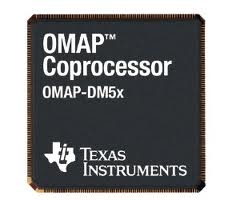Mr. TTL (otherwise known as Texas Instruments or TI) has had a great run in the cellular market but it is time to decamp. The future is Analog and OMAP must depart to one of the remaining players looking to win the Smartphone and Tablet market. TI is exiting the market so it can focus on the high volume analog market.

On first sight, the Google acquisition of Motorola should seem to bolster TI since they are a big user of OMAPs. The new OMAP 5 architecture looks to be very impressive in terms of increased performance at reduced power over ARM9 competitors and is the basis for Ice Cream, the next version of Google’s Android O/S. So why leave the party as things are looking up? The short answer is that Analog can be a 70% Gross Margin Business and the ARM processor market is headed for major price compression.
During the last downturn, Rich Templeton decided that enough is enough. TI, a company that prides itself on always having a big Fab in Dallas, decided to move forward on building and outfitting the world’s first 300mm Analog fab. TI would build in volume and sell at competitive pricing that still left lots of room for margin. The acquisition of National, their low cost competitor completed the plan. Think of TI as in the same spot Walmart would be if it acquired Target and Costco. Of course if you aren’t the Walmart or TI type of shopper, you can always go to Linear Tech to get your high priced, custom analog.
To fill the big 300mm fab and generate high growth, Templeton has to get rid of OMAP. It is, in the eyes of Intel and Apple, a competitor and if TI wants to own the Analog world it must not compete with the big Processor Players. You could say the same about nVidia, Qualcomm, Broadcom and Marvell. A little history in order here, back in 1997 Brian Halla had dreams of conquering the world with cheap PCs. So he bought Cyrix. Intel congratulated him by redesigning their reference boards sans National analog. A major Migraine swept through the sales ranks over at National’s Headquarters.
But who would want OMAP? The current darlings of the ARM world are Qualcomm and nVidia. Broadcom and Marvell are lagging and AMD has yet to figure out it needs an ARM core to marry with x86. But of the three Broadcom has the cash and its core businesses are doing exceptionally well. Wireless is a major strength. The weakness is in application processors. Without both a strong baseband and application processor, the long-term outcome is iffy.
If Broadcom acquires OMAP they have a share of the business with nVidia in the Android market, including Motorola. A huge step up from where they are today. However, within all this, one gets the sense that more tremors are on the way and the price to play the next round will go up another notch.
Note: You must be logged in to read/write comments
Share this post via:









Quantum Advantage is About the Algorithm, not the Computer